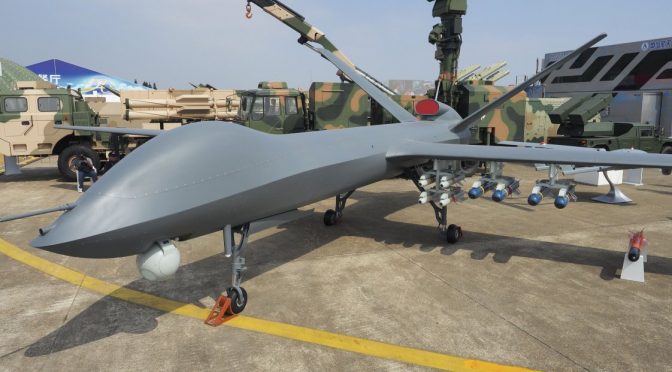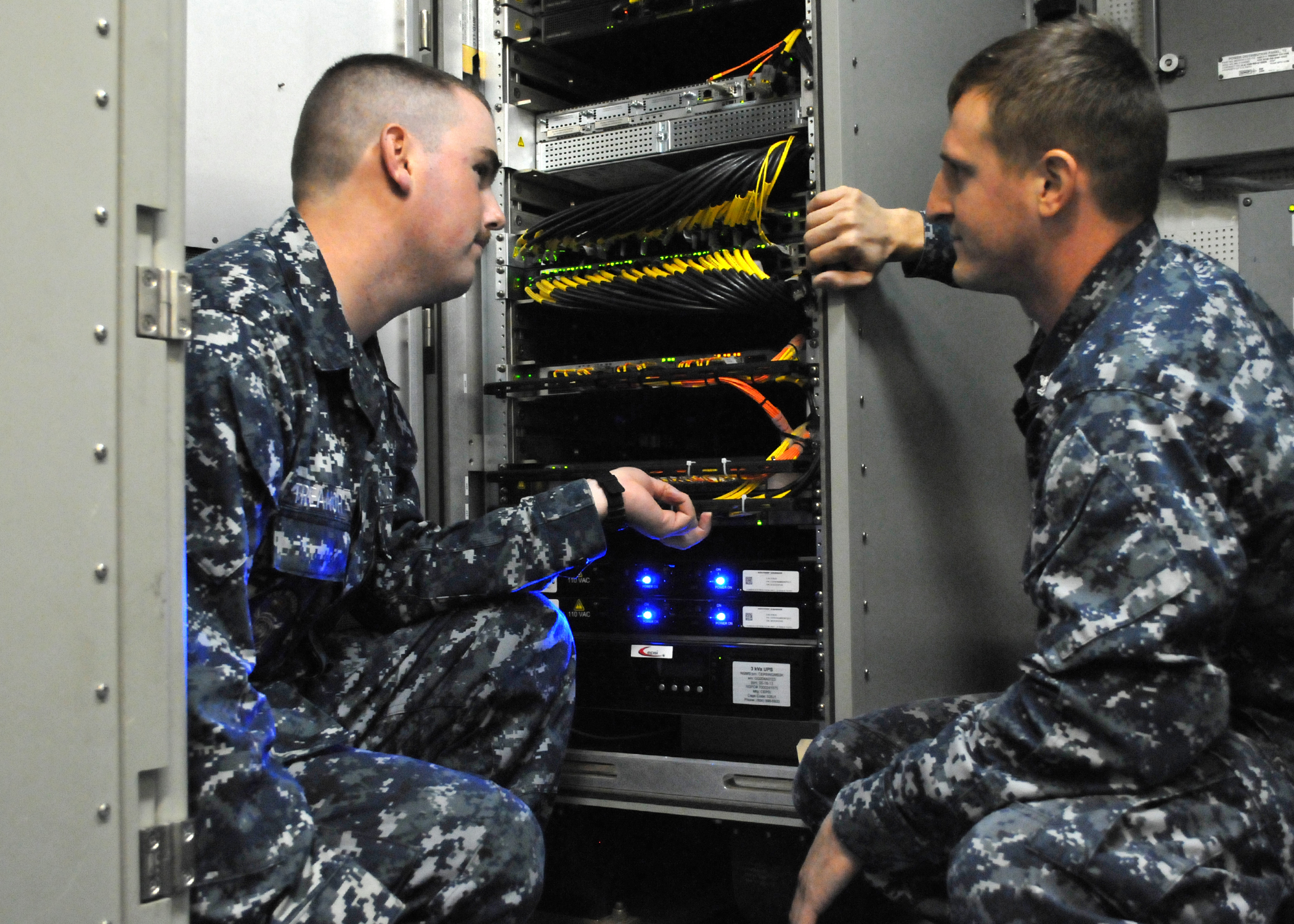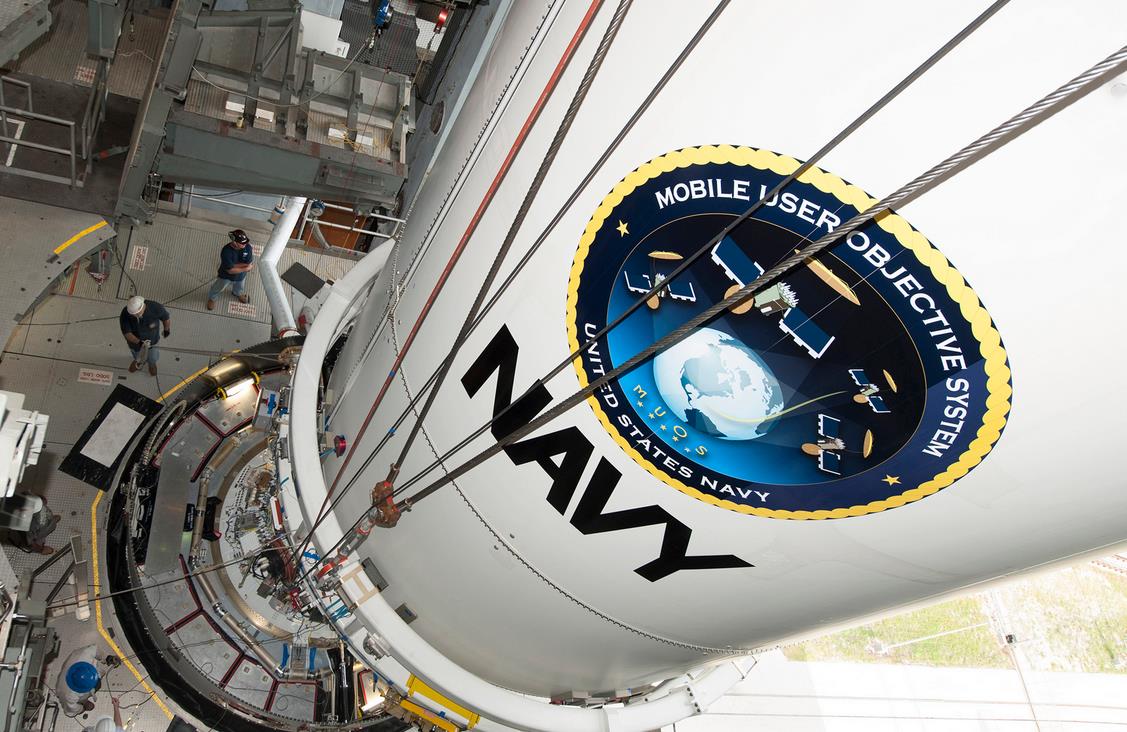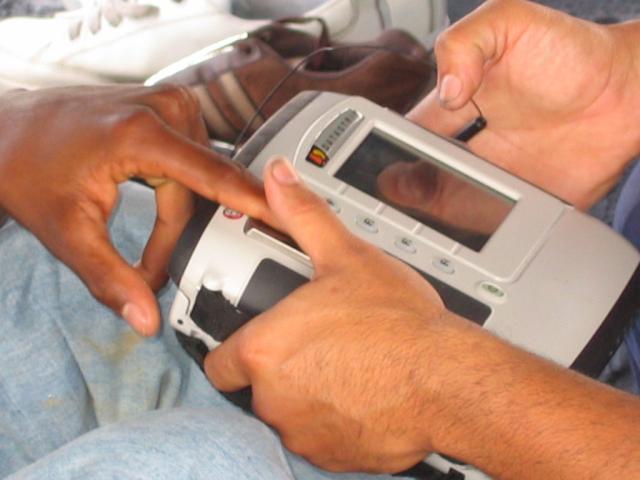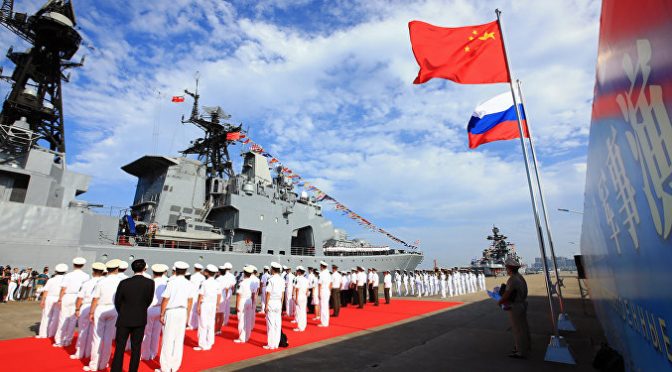By Brandon Hughes
Drone Diplomacy
On December 15, 2016, a United States Navy (USN) unmanned underwater vehicle (UUV) was seized by the Chinese People’s Liberation Army Navy (PLAN) about 80 miles from Subic Bay, Philippines (Global Times, December 17, 2016). This was met with quick negotiations and the agreed return of the $150,000 research drone following complaints to Beijing. The then President-elect, Donald Trump, condemned the action from his twitter feed and responded, “Keep it!”, further escalating the situation and casting an unknown shadow on the future of the U.S.-China relationship (Reuters, December 18, 2016). Almost immediately, the seemingly mundane deployment of UUVs and unmanned aerial vehicles (UAVs) in the South China Sea became a potential flashpoint in the ever-contentious territorial disputes.
Countering President Trump’s South China Sea endeavors is a legislative move by Beijing to require all foreign submersibles transiting in China’s claimed territorial waters to travel on the surface and or be subject to confiscation (China News Service, February 15, 2017). The proposed change to the 1984 China Maritime Traffic Safety Law compares to China’s East China Sea Air Defense Identification Zone (ADIZ), set up in 2013. Codifying domestic maritime law further adds a layer of validity in the event a UAV or UUV is captured while patrolling in a disputed area. Assuming a more severe response is unlikely from the U.S., Beijing may use the law as an excuse to reduce unmanned foreign Intelligence, Surveillance, and Reconnaissance (ISR) assets in its periphery, regardless of international opinion.
While demonizing foreign ISR activities, China continues to bolster its own ISR efforts for deployment in maritime disputes, foreign surveillance, and warfighting capacity. Advances in armed/unarmed and stealth UAVs will further integrate UAVs into the Chinese People’s Liberation Army (PLA) joint forces array. Advances such as satellite data-link systems not only extend the range of these assets, but also allow for a more seamless integration of command and control (C2). This further enhances relatively low cost and low risk surveillance mechanisms.
UAVs are already an emerging capability within the PLA, law enforcement, and civil agencies and are playing a more prominent role in operations. Real-world testing will refine the PLA doctrinal use of these systems. Control, direction of development, and interoperability in joint operations are all questions yet to be answered. Developing an understanding of how these systems are incorporated into the PLA force structure may give insight into developing doctrine and political considerations. A clear understanding of both may support a potential framework for de-escalating unmanned vehicle incidents between nations where China has interests.
Deployment
On January 20th, 2017, the Chinese North Sea Fleet (NSF) received a request for help with a distress call initiated from the rescue center in Jiangsu Province to aid in the search and rescue of 13 crew members aboard a Chinese fishing boat that sank around 6 am that morning. The PLAN NSF dispatched two navy frigates, the ‘Suzhou’ and ‘Ji’an’ to the East China Sea to search for the crew of the lost fishing vessel, named the Liaoda Zhongyu 15126. What made this search-and-rescue effort unique was the announcement that a surveillance UAV (make unknown) aided in the search.
The deployment of a UAV with two naval frigates, in coordination with a maritime rescue center, demonstrates the multi-functionality and capability of China’s UAVs. Additionally, it is likely the UAV was deployed from a non-naval platform due to the size of the helicopter deck and lack of hangar on a ‘Suzhou’ and ‘Ji’an’, both Type 056/056A corvettes (Janes, November 3, 2016; Navy Recognition, March 18, 2013). This proof of concept highlights the interoperability of air, land, and sea assets coordinating for a common purpose. What is unknown, specifically, is where the UAV was launched, who controlled it, and whether it was using a line-of-sight (LOS) or extended control system.
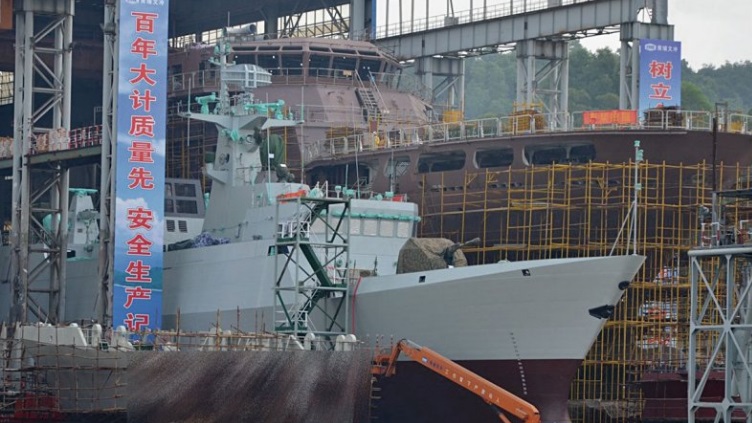
Capitalizing on peacetime operations validates control and communication hand-offs and will integrate intelligence platforms, such as the PLAN’s newest electronic surveillance ship, the Kay Yangxin (开阳星 ), vastly expanding the reach of Chinese ISR. Additionally, integration of satellite-linked communication packages, utilizing the domestic constellation of GPS satellites known as the Beidou, or Compass, will continue to improve UAV navigation and targeting systems. These improved navigation and satellite aids will be integrated into existing UAV datalink systems and developed with future ISR systems in mind.
Command Guidance
The use of UAVs for military and ISR purposes can have unintended political and military consequences. The PLA command structure has always focused around centralization to retain political power over the military. It is fair to assume that the guidelines for deployment of UAVs used for strategic intelligence missions are developed at a high level. On November 26, 2015, President Xi Jinping rolled out one of the many updates to the Soviet-style military system that was part of a recent effort to make the PLA more efficient. According to Yue Gang, a retired Colonel in the PLA’s General Staff Department, placing all branches of the military under a “Joint Military Command” was the “biggest military overhaul since the 1950s.” On February 1, 2016, a few months after Yue Gang’s comments, China’s Defense Ministry Spokesman Yang Yujun stated that the PLA was consolidating seven military regions into five theater commands, a move likely to streamline C2 (China Military Online, February 2, 2016). The theater commands will be presided over by the Central Military Commission for overall military administration (See China Brief, February 4, 2016 and February 23, 2016).
Centralizing and reducing the number of commands will allow for each individual military component to focus on their own training objectives (China Military Online, February 2, 2016). This concept promotes component independence to enhance capability, but doesn’t talk to efforts to enhance integration of forces in joint military exercises. The logistical and financial burden of large-scale exercises naturally limit the frequency of exercises each region can conduct per year. What is not clear, yet important to understand for a high-end conflict, is how joint operations between military regions will be executed. Chinese Defense Ministry Spokesman Yang Yuju added that the new structure allows for the commands to have more decision-making power in responding to threats and requesting CMC support. (China Military Online, February 2, 2016).
Utilizing UAVs in regional operations to patrol disputed regions indicates that tactical control would be conducted at the highest level by a chief staff at a joint command center, but more likely relegated to a lower echelon headquarters element closer to the front lines. These lower-tiered units are likely bound by the strict left and right limits on where they patrol. Advances in simultaneous satellite data-link systems will allow for a more seamless handoff of ISR/strike assets between commands in a robust communications environment. The fielding of enhanced and interoperable satellite communications is likely to bolster the deployment of UAVs and further integrate them into PLA doctrine by supporting the “offshore waters defense” and “open seas protection” missions, as outlined in the PLA’s 2015 White Paper on Military Strategy (China Military Online, May 26, 2015).
Direct operational control of the PLA’s UAVs is generally given to the commander of the next higher echelon or to a commander on the ground. UAV technicians depicted on Chinese military websites tend to hold the ranks of junior non-commissioned officers E-5/OR-5 (Sergeant) to O- 2/OF-1 (First Lieutenant). This is similar to certain units of the United States Army, where platforms are directly controlled by enlisted and warrant officers. However, just like the U.S., guidance and direction is usually “tasked down” by a higher echelon, and UAVs with a strike package will likely be controlled or employed by officers under orders from above.
UAV units in the PLA are likely to be attached to a reconnaissance or communications company. Likewise, the PLA Air Force (PLAAF) and PLA Navy (PLAN) will likely have UAV-specific units. Advancements in communication will enable various command levels (i.e. company, battalion, brigade) to simultaneously pull UAV feeds and give guidance to the operator. Based on the size of various exercises, the training indicates UAV control is given down to the lowest level of command but under extremely strict guidance. Additionally, the authority to deploy or strike is likely to be held at the regional command level or higher. Specific rules of engagement are unknown, but those authorities will be developed through trial and error during a high-intensity conflict.
Interoperability
Communications infrastructure improvements are evident in the development of over-the-horizon satellite datalink programs and communication relays. The CH-5 “Rainbow” (Cai Hong) drone, for example, resembles a U.S. Atomic General MQ-9 “Reaper” and is made to function with data systems capable of integrating with previous CH-4 and CH-3 models (Global Times, November 3, 2016). The newest model is capable of 250 km line-of-sight datalink, with up to 2000 km communications range when linked into a secure satellite (Janes, November 7, 2016).
It is likely that improvements in interoperability will be shared among service branches. Recent developments in Ku-Band UAV data-link systems, highlighted during the 11th China International Aviation and Aerospace Exposition in November 2016, will further synchronize intelligence sharing and over-the-horizon control of armed and unarmed UAVs (Taihainet.com, November 2, 2016).
PLA Signal Units already train on implementing UAV communication relays (China Military Online, April 8, 2016). Exercises like these indicate a desire to increase the interoperability in a joint environment. UAVs with relay packages will improve functionality beyond ISR & strike platforms. Units traversing austere environments or maritime domains could utilize UAV coverage to extend the range of VHF or HF radios to direct artillery or missile strikes from greater distances. If keyed to the same encrypted channels, these transmissions could be tracked at multiple command levels.
Joined with a UAV satellite datalink, ground or air communications could be relayed from thousands of kilometers away. At the same time, a Tactical Operations Center (TOC) could directly receive transmissions before passing UAV control to a ground force commander. In a South China Sea or East China Sea contingency, UAVs could link unofficial maritime militias (dubbed “Little Blue Men”) via VHF to Chinese Coast Guard Vessels or Naval ships. These messages could also be relayed to PLA Rocket Force units in the event of an anti-access area denial (A2AD) campaign.
Capping off China’s already enormous communication infrastructure is the implementation of dedicated fiber-optic cables, most likely linking garrisoned units and alternate sites to leadership nodes. Future use technologies such as “quantum encryption” for both fiber-optic and satellite based communication platforms could lead to uninhibited communication during a military scenario (The Telegraph, November 7, 2014; Xinhua, August 16, 2016).
Functionality
Based on the use of Chinese UAVs overseas and in recent exercises, UAVs will continue to be utilized on military deployments in the South China Sea for patrol and ISR support. In the event of a contingency operation or the implementation of an A2/AD strategy, UAVs will likely be used for targeting efforts, battle damage assessments, and small scale engagements. Against a low-tech opponent, the UAV offers an asymmetric advantage. However, the use of UAVs for something other than ISR would be greatly contested by more modern powers. UAVs are generally slow, loud, and observable by modern radar. Many larger UAVs can carry EW packages, although there is little information on how the datalink systems handle EW interference. Ventures in stealth technology, such as the “Anjian/ Dark Sword,” (暗剑) and “Lijian/ Sharp sword” (利剑) projects, would increase Beijing’s UAV survivability and first strike capability if deployed in a contingency operation (Mil.Sohu.com, November, 24, 2013). However, a large-scale deployment of stealth UAV assets is not likely in the near future due to cost and material constraints.
To reduce the risk of high-intensity engagements, China may expand its reliance on UAVs to harass U.S., Taiwanese, Japanese, Philippine, and Vietnamese vessels. Additionally, UAVs may be utilized abroad in the prosecution of transnational threats. So far, China has stuck to a no-strike policy against individuals, although it was considered as an option to prosecute a drug kingpin hiding out in Northeast Myanmar (Global Times, February 19, 2016). The “Rainbow/Cai Hong” variant and “Yilong / Pterodactyl,” made by Chengdu Aircraft Design & Research Institute (CADI), represent some of the more well-known commercial ventures used by the PLAAF (PLA Air Force) and sold on the global market. These variants are often used for ISR in counter-insurgency and counterterrorism operations (The Diplomat, October 6, 2016; Airforce-technology.com, no date).
Strike capability, aided by satellite datalink systems, is another growing capability of China’s UAV programs (Popular Science, June 8, 2016). In late 2015, the Iraqi army released images from a UAV strike against an insurgent element utilizing the Chinese-made export variant “Rainbow 4” (彩虹 4) running on a Window’s XP platform (Sohu.com, January 2, 2016; Popular Science, December 15, 2015). PLA UAVs already patrol border regions, conduct maritime patrols, and assist in geological surveys and disaster relief.
The arrival of off-the-shelf UAVs contributes to the growing integration of dual-use platforms. Technology and imagination are the only limits to the growing UAV industry. Additionally, the export of high-end military UAVs will only continue to grow as they are cheaper than U.S. models and growing in capability. The profit from these sales will certainly aid research and development efforts in creating a near-peer equivalent to the U.S. systems. For a struggling African nation held hostage by rebels (e.g. Nigeria) or an established U.S. ally in the Middle East (e.g. Jordan), the purchase of UAVs at a relatively low price will increase good will and allow for an operational environment to refine each platform’s own capability (The Diplomat, October 6, 2016; The Daily Caller, December 2, 2016).
Conclusion
UAVs for military operations are not new, however, improvements in lethal payloads, targeting, and ISR capabilities will change the role in which UAVs are utilized. Considering China’s own drone diplomacy, the deployment of UAVs is as much a political statement as it is a tactical platform. State-run media has highlighted the successes of its drone program but has not been clear on who, or at what command level, operational control of UAVs is granted. Due to Beijing’s standing policy against lethal targeting, release authority is most likely relegated to the Central Military Commission, or even President Xi himself.
The extent that doctrine has been developed in planning for a high or low-intensity conflict is still unclear. The advent of satellite data-links and communication relays means the tactical control of UAVs may be seamlessly transferred between commanders. The rapid development of UAVs will continue to be integrated into the joint forces array but must be done as part of an overall doctrine and C4ISR infrastructure. Failure to exercise their UAVs in a joint environment will affect combined arms operations and reduce the PLA’s ability to synchronize modern technology with centralized command decisions and rigid doctrine.
Brandon Hughes is the founder of FAO Global, a specialized research firm, and the Senior Regional Analyst-Asia for Planet Risk. He has previously worked with the U.S. Army, the Carnegie-Tsinghua Center for Global Policy, and Asia Society. He is a combat veteran and has conducted research on a wide variety of regional conflicts and foreign affairs. Brandon holds a Masters of Law in International Relations from Tsinghua University, Beijing and has extensive overseas experience focused on international security and U.S.-China relations. He can be reached via email at DC@FAOGLOBAL.com.
Featured Image: CASC’s CH-5 strike-capable UAV made its inaugural public appearance at Airshow China 2016 (IHS/Kelvin Wong)

